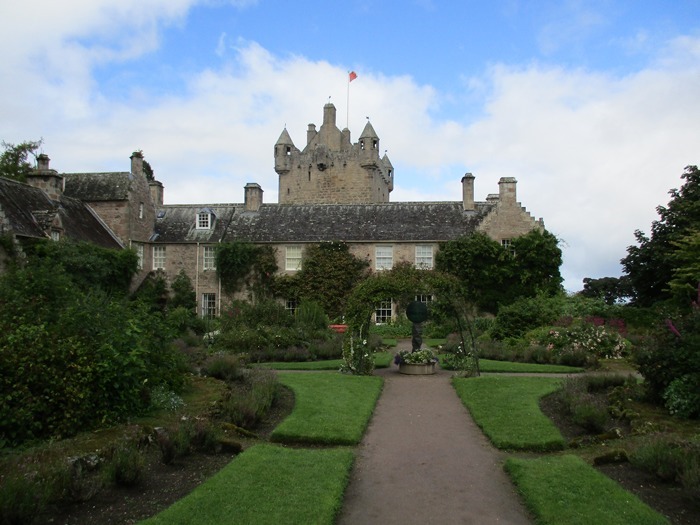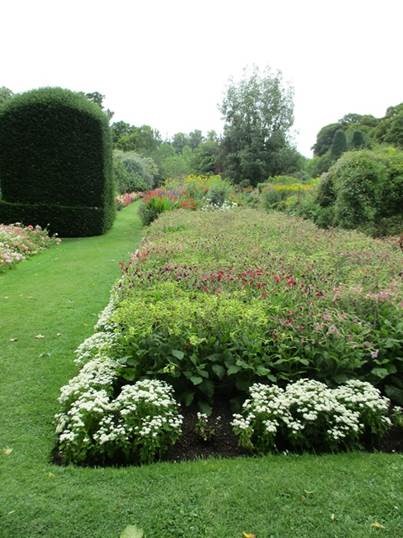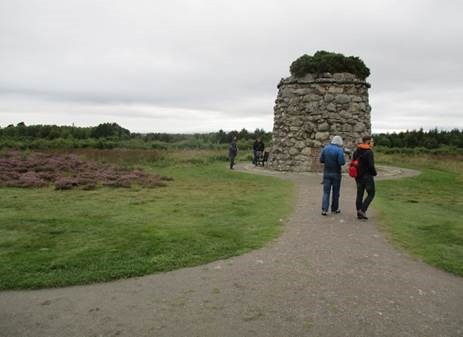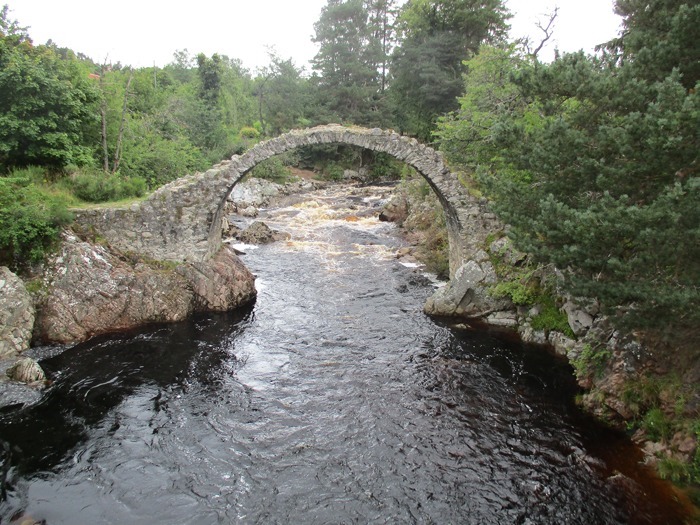Around Inverness

|
CAWDOR We left the Caledonian Canal at the Clachnaharry sea lock and spent 2 nights in Inverness Marina which is rather soul-less stuck out on the outskirts of the town down amongst the docks. However, we hired a car for a couple of days and explored the countryside to the south. Our first stop was Cawdor castle which, despite Shakespeare’s play, has nothing to do with the real king Macbeth who lived in the 11th century whereas Cawdor was built around a 15th century tower house by the Thane of Calder. It was added to as time went on and it moved ownership from the Calder Clan to the Campbell Clan. It is an interesting Scottish fortification that is still lived in by the Dowager Countess Cawdor, stepmother to the 7th Earl Cawdor a member of the same Campbell family who have lived there continuously since the 16th century.
Because it was lived in the castle felt different, more homely if that’s possible for a castle. It felt more personal with modern books and lots of photographs and pot plants about the rooms. A highlight was the garden which was beautifully kept and full of colour despite the grey weather that has dogged us here.
As well as the formal gardens there was a Secret Garden with a small sheltered door (much like the book) which led out into a more wild area with wonderful trees like giant red wood and a fast stream cutting through; children visiting with parents could run more freely here. Lunch was good at Cawdor, we had our favourite Cullen Skink.
CULLODEN The following day we visited Culloden, the site of the last pitched battle on British soil which took place on the 16th April 1746 five miles east of Inverness on the wind-swept upland plain of Drummossie Moor. This last Jacobite Rising was led by ‘Bonnie Prince Charlie’ (Charles Edward Stuart) with an army determined to claim back the thrones of Britain and Ireland; until Culloden the Jacobite campaign against their Hanoverian oppressors had been undefeated. The 1964 film of the battle has stayed with me since I first saw it at school. The one sided slaughter of the Scottish clans is well told in the National Trust centre adjacent to the moor where grape shot was used to such devastating effect. It’s hard to imagine this rather bleak moor full of soldiers, raging with the noise and smell of battle. The Duke of Cumberland leading the government’s troops became known as ‘the butcher’ for his treatment of the Jacobites both during and after the battle. There is definitely a feeling of unease when walking this moor.
This battle, with its professional and non-professional soldiers on both sides, had the same devastating impact as the American Civil War. The Jacobite army was mainly of Highland Gaels but there were many Scottish Lowlanders, French, Irish and English. The British government also drew support from some major Highland clans. As a result clans were set against clans and families were divided by this split of loyalties forcing fathers against sons, brothers against brothers and husbands against wives. Archaeological investigation is still in progress. There is just one monument on the moor, a memorial cairn erected in 1881 when simple stones were also sited to mark the burial areas by the last laird to live at nearby Culloden House . The battle lines are now marked with coloured flags.
This was an extremely good visit albeit about a bleak time in our history. The National Trust Scotland have excelled in providing a rich experience for its visitors having gone to great lengths to help everyone to understand the background history to the tragic event. We drove back feeling a bit sombre until we had a brief stop and discovered this rather wonderful disused packhorse bridge at Carrbridge. Built in 1717 it was possibly used by some of the poor retreating men from the awful battle.
|




